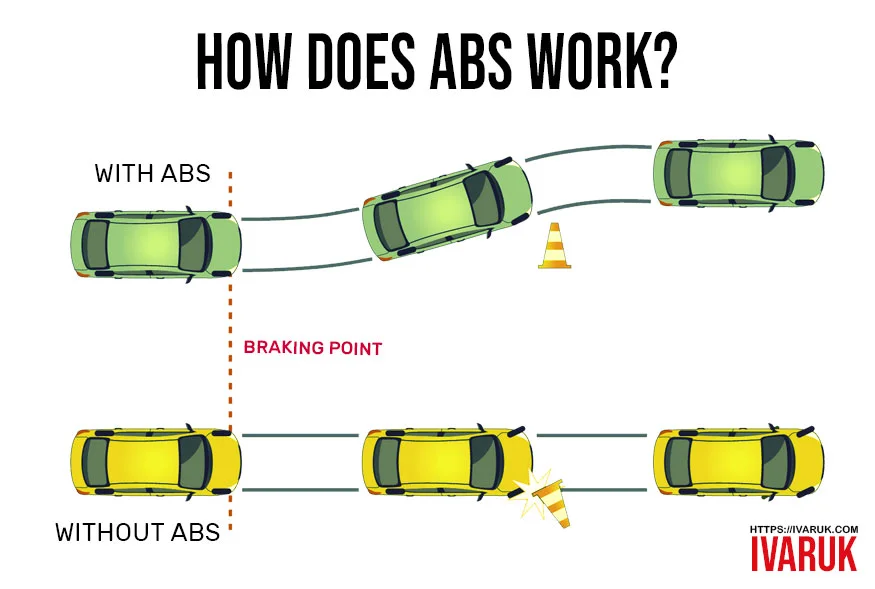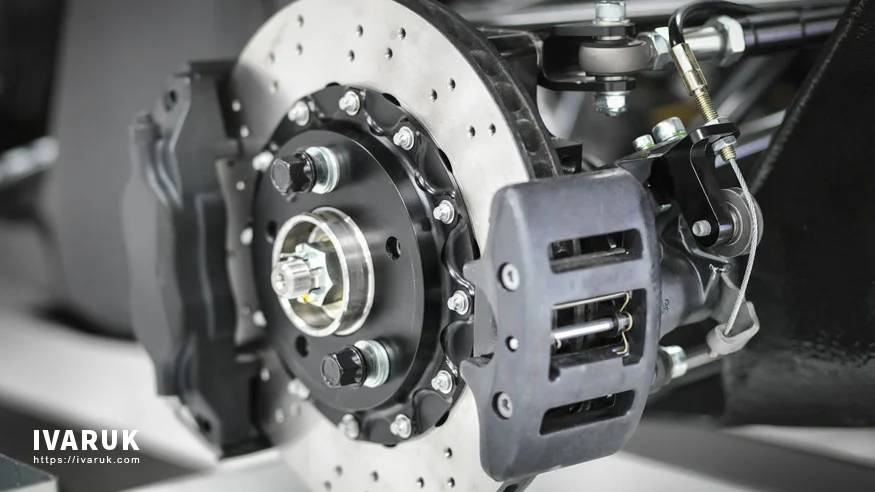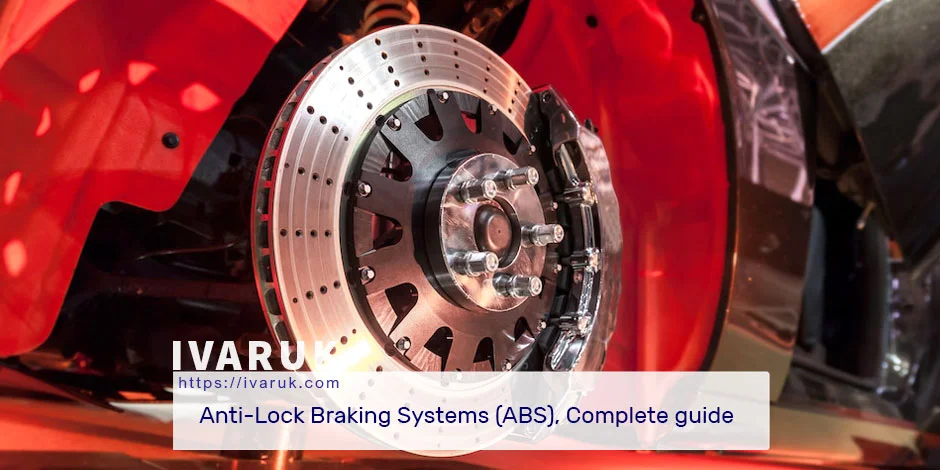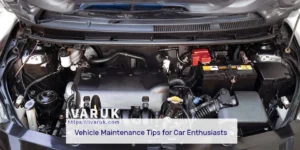Table of Contents
ToggleUnderstanding Anti-Lock Braking Systems (ABS)
In the realm of automotive safety, few innovations have had as profound an impact as Anti-Lock Braking Systems, commonly known as ABS. If you’ve ever driven a modern vehicle, chances are you’ve experienced the reassuring pulse of the brake pedal as ABS kicks in to prevent wheel lockup during sudden stops. In this comprehensive guide, we will delve into the intricacies of Anti-Lock Braking Systems, exploring how they work, their evolution, their advantages, and their pivotal role in enhancing road safety.
What is an Anti-Lock Braking System (ABS)?
Anti-Lock Braking System, or ABS, is an advanced safety feature designed to prevent wheel lockup during emergency braking situations. Unlike traditional braking systems that rely on manual modulation of the brake pedal, ABS uses sophisticated technology to automatically adjust brake pressure, ensuring the wheels continue to rotate, and the vehicle remains under control.
At its core, Anti-Lock Braking Systems is a lifesaving mechanism that enhances a driver’s ability to maintain steering control and stability during hard braking. It achieves this by rapidly modulating brake pressure to individual wheels, preventing them from skidding or locking up on slippery surfaces.

How Does ABS Work?
ABS operates through a combination of sensors, valves, and a control module.
Here’s a simplified breakdown of how Anti-Lock Braking Systems (ABS) works:
- Sensor Inputs: ABS relies on wheel-speed sensors to monitor the rotational speed of each wheel. These sensors send real-time data to the ABS control module.
- Detecting Impending Lockup: When the ABS system detects that a wheel is about to lock up, it intervenes by momentarily reducing brake pressure to that specific wheel.
- Pulsating Brakes: ABS achieves wheel speed control by rapidly modulating brake pressure, causing the brake pedal to pulse. This pulsing sensation is what drivers feel when Anti-Lock Braking Systems engage during hard braking.
- Maintaining Steering Control: By preventing wheel lockup, ABS ensures that the driver can still steer the vehicle while braking, a crucial factor in avoiding accidents.
Types of car Anti-Lock Braking Systems (ABS)
There are four types of Anti-Lock Braking Systems:
- Four-channel, four-sensor ABS
- Three-channel, four-sensor ABS
- Three-channel, three-sensor ABS
- Rear-wheel ABS
Each type has its specific applications and advantages.
Experience the future of road safety with IVARUK‘s expert Brakes and Suspension Services. Our competitive UK-wide prices and guaranteed quality ensure your vehicle’s ABS, brakes, and suspension are in top shape. Contact us today for a smoother, safer ride!
Four-channel, four-sensor ABS
The best ABS system is the four-channel system. It can precisely control the braking force on each individual wheel, which allows it to prevent skids more effectively than other systems.
Four-channel Anti-Lock Braking Systems work by monitoring the speed of each wheel using a speed sensor. If a wheel starts to skid, the ABS system will reduce the braking force on that wheel until it regains traction. This process is repeated rapidly, preventing the wheel from locking up completely.
Four-channel ABS systems are more expensive than other ABS systems, but they offer the best performance in terms of skid prevention. They are also more common in high-end vehicles.
The History of Anti-Lock Braking Systems (ABS)
ABS technology has come a long way since its inception in the 1950s. Initially developed for aircraft, it gradually made its way into the automotive industry in the 1960s. Today, it’s a standard feature in most modern vehicles.

The Evolution of ABS Technology
The journey of ABS technology has been marked by continuous improvement and innovation. Over the years, ABS has evolved to become more reliable, efficient, and effective. Key milestones include the introduction of electronic control systems, enhanced sensor technology, and the integration of ABS with other safety features such as Electronic Stability Control (ESC).
In the early days of ABS, it was primarily found in high-end vehicles, but its adoption has become widespread, thanks to advancements that have made it more affordable and accessible.
Advantages of Anti-Lock Braking Systems (ABS)
The advantages of ABS are manifold and contribute significantly to vehicle safety:
- Improved Stability: ABS prevents wheel lockup, allowing the driver to maintain control and steer during emergency braking.
- Shorter Stopping Distances: ABS reduces stopping distances on slippery surfaces, potentially preventing collisions.
- Reduced Risk of Skidding: By preventing wheel skidding, ABS minimizes the risk of lateral skids and loss of vehicle control.
- Enhanced Traction: Anti-lock braking systems (ABS) maximize tyre traction on the road, especially in adverse conditions like rain or snow.
Common Misconceptions About ABS
Despite its proven effectiveness, there are several misconceptions about ABS:
- Myth 1: ABS Always Shortens Stopping Distance: ABS doesn’t necessarily make your vehicle stop more quickly; it helps maintain control during braking.
- Myth 2: ABS Works on All Surfaces: Anti-lock braking systems (ABS) are most effective on slippery surfaces. On dry pavement, traditional braking may perform equally well.
- Myth 3: ABS Replaces Safe Driving Practices: ABS is a safety aid, not a substitute for safe driving practices like maintaining a safe following distance.

Anti-lock braking systems (ABS) and Vehicle Safety
The impact of ABS on vehicle safety cannot be overstated. It plays a crucial role in preventing accidents and protecting lives. Statistics show a significant reduction in collision rates and fatalities in vehicles equipped with ABS.
ABS vs. Conventional Brakes
Compared to traditional braking systems, ABS offers significant advantages. Conventional brakes are prone to wheel lockup, increasing the risk of skidding. ABS eliminates this risk, making it a lifesaving feature.
Comparison of ABS and conventional brakes
| Aspect | ABS Braking | Normal Braking (Conventional) |
| Wheel Lockup | Prevents wheel lockup during hard braking, allowing wheels to rotate intermittently. | May result in wheel lockup, causing skidding and loss of steering control. |
| Steering Control | Maintains steering control, allowing the driver to steer around obstacles while braking. | Steering control is compromised when the wheels lock, making it difficult to maneuver. |
| Braking on Slippery Surfaces | More effective on slippery surfaces like wet or icy roads, reducing the risk of skidding. | Less effective on slippery surfaces, increasing the risk of skidding and accidents. |
| Stopping Distance | Generally shorter stopping distances due to controlled wheel rotation. | Longer stopping distances due to skidding and reduced control. |
| Brake Pedal Pulsation | May feel pulsating or vibrating brake pedal during ABS activation. | No pulsation or vibration in the brake pedal during normal braking. |
| Skid Marks | Leaves intermittent skid marks on the road surface. | Leaves continuous skid marks on the road surface. |
| Risk of Collisions | Reduced risk of rear-end collisions and collisions during emergency stops. | Higher risk of rear-end collisions and loss of control during emergency stops. |
| Technology | Utilizes sensors and an electronic control unit (ECU) to modulate brake pressure. | Relies on standard hydraulic brake systems without electronic control. |
| Maintenance | Requires occasional maintenance and sensor checks for optimal functionality. | Routine brake system maintenance is required, with no specific ABS components. |
| Safety | Enhances overall safety by preventing wheel lockup and improving control. | Provides basic braking but may compromise safety in adverse conditions. |
Benefits of Anti-lock braking system (ABS)
- ABS can help you to stop more quickly, especially on slippery surfaces.
- ABS can help you to maintain control of your vehicle during braking, even in slippery conditions.
- ABS can help to reduce the risk of accidents.
Power up with confidence with IVARUK’s Jump Starter and Battery Services. Whether you need a quick boost or a battery replacement, our competitive UK-wide prices and guaranteed service ensure you’re never left stranded. Contact us now for a reliable jumpstart and a fresh charge of energy!
Drawbacks of Anti-lock braking system (ABS)
- ABS can be more expensive than conventional brakes.
- ABS can increase stopping distance slightly on dry surfaces.
- ABS can cause a pulsing sensation in the brake pedal during braking.
Drawbacks of conventional brakes
- Conventional brakes can lock up during braking, which can lead to skids and loss of control.
- Conventional brakes may not be as effective as ABS on slippery surfaces.
Overall, ABS is a safety feature that can help to improve stopping distance and reduce the risk of skids and loss of control. However, ABS is more expensive than conventional brakes.
Which type of brakes is right for you?
If you live in a climate with a lot of snow or ice, or if you frequently drive on slippery roads, then ABS is a good investment. ABS can also be beneficial if you have a family or if you frequently carry cargo.
If you are on a budget, or if you live in a warm climate and rarely drive on slippery roads, then conventional brakes may be a good option for you. However, it is important to be aware of the limitations of conventional brakes and to drive carefully in slippery conditions.
Future Trends in ABS Technology
As technology advances, ABS is set to evolve further. Some emerging trends include:
- Integration with Autonomous Systems: ABS will be an integral part of autonomous vehicle safety systems.
- Smart Braking Systems: ABS will continue to become more intelligent, adapting to road conditions in real time.
Maintaining Your ABS System
Proper maintenance of your vehicle’s ABS system is essential for its continued reliability. Here are some tips:
- Regular Inspections: Include ABS system checks during routine vehicle inspections.
- Address Warning Lights: If the Anti-Lock Braking Systems (ABS) warning light comes on, have it checked promptly by a qualified technician.
- Brake Fluid: Ensure your brake fluid is at the recommended level, as low fluid levels can affect ABS performance.
- Brake Pad Replacement: Regularly inspect and replace brake pads as needed to maintain optimal braking performance.
4 ABS system malfunction detection signs
Here are some of the signs that your Anti-lock Braking System (ABS) may need maintenance or repair:
- The ABS warning light on your dashboard is illuminated.
- You feel a pulsing sensation in the brake pedal when you brake.
- Your vehicle skids or loses traction when you brake.
- You hear a grinding or squealing noise when you brake.
If you notice any of these signs, it is important to have your ABS system inspected and repaired by a qualified mechanic.
A few tips to maintain your vehicle’s ABS system
Here are some tips for maintaining your ABS system:
- Have your ABS system inspected and serviced regularly by a qualified mechanic.
- Replace your brake fluid every two years, or more often if recommended by your vehicle’s manufacturer.
- Keep your brakes in good condition. Have your brakes inspected and repaired regularly by a qualified mechanic.
- Avoid driving through deep water or mud, as this can damage your ABS sensors.
If you live in a snowy or icy climate, be sure to clean your ABS sensors regularly to prevent them from becoming clogged with snow or ice.
By following these tips, you can help to ensure that your ABS system is always in good working condition and that you are protected from skids and loss of control during braking.
How to clean your ABS sensors
ABS sensors are responsible for detecting the speed of each wheel. If a wheel starts to skid, the ABS system will reduce the braking force on that wheel until it regains traction.
ABS sensors are located at each wheel and are exposed to the elements. This means that they can become dirty or damaged over time. If your ABS sensors are dirty, they may not be able to work properly, which could put you at risk of a skid.
Important points in Cleaning your ABS sensors
Cleaning your Anti-lock Braking System (ABS) sensors is a relatively simple task that can be done at home. Here are the steps involved:
- Park your vehicle on a level surface.
- Block the wheels to prevent the vehicle from moving.
- Locate the ABS sensors. They are usually located near the wheel hub or brake caliper.
- Use a wire brush to clean any dirt or debris from the ABS sensors.
- Spray the ABS sensors with a brake cleaner.
- Allow the brake cleaner to dry completely.
- Reinstall the ABS sensors.
Once you have cleaned your ABS sensors, it is important to test them to make sure that they are working properly. To do this, simply drive your vehicle in a safe area and brake hard. If the Anti-lock Braking System (ABS) engages, you will feel a pulsing sensation in the brake pedal.
Stuck on the road due to ABS issues or any breakdown? IVARUK’s Breakdown and Recovery service has you covered. With competitive UK-wide pricing and guaranteed service, we’re here to get you back on track. Contact us now for reliable assistance and peace of mind.
Important advice for cleaning your ABS sensors
Here are some additional tips for cleaning your ABS sensors:
- Be careful not to damage the ABS sensors with the wire brush.
- Be sure to use a brake cleaner that is specifically designed for ABS sensors.
- Allow the brake cleaner to dry completely before reinstalling the ABS sensors.
- Test the ABS system after cleaning the sensors to make sure that they are working properly.
By following these tips, you can help to keep your ABS sensors clean and in good working condition. This will help to ensure that your Anti-lock Braking System (ABS) is always ready to protect you from skids and loss of control during braking.
How to check your ABS fluid level
ABS fluid is a type of hydraulic fluid that is used to operate the Anti-lock Braking System. It is important to check your ABS fluid level regularly to ensure that it is at the proper level.
How to check the ABS fluid level in a vehicle
Here are the steps involved in checking your ABS fluid level:
- Park your vehicle on a level surface.
- Open the hood of your vehicle.
- Locate the ABS fluid reservoir. It is usually located near the master cylinder. The ABS fluid reservoir is typically labeled “ABS” or “Anti-Lock Brakes”.
- Remove the cap from the ABS fluid reservoir.
- Check the fluid level. The fluid level should be between the “FULL” and “LOW” marks on the reservoir.
- If the fluid level is low, add more ABS fluid until it reaches the “FULL” mark.
- Replace the cap on the ABS fluid reservoir.
- Close the hood of your vehicle.
Some important points to check the ABS fluid level
Here are some additional tips for checking your ABS fluid level:
- Be careful not to overfill the ABS fluid reservoir. Overfilling can damage the ABS system.
- Use only ABS fluid that is recommended by your vehicle’s manufacturer.
- If you are unsure how to check your ABS fluid level, consult your vehicle’s owner’s manual.
It is important to check your ABS fluid level regularly, especially if you live in a cold climate. Anti-lock Braking System (ABS) fluid can absorb water over time, which can reduce its effectiveness. If you notice that your ABS fluid level is low or that the fluid is cloudy or discolored, have your ABS system inspected and serviced by a qualified mechanic.
By following these tips, you can help keep your ABS fluid level at the proper level and ensure that your Anti-lock Braking System (ABS) is always ready to protect you from skids and loss of control during braking.
How to bleed your ABS brakes
Bleeding your ABS brakes is a process of removing any air that has gotten into the ABS system. Air in the Anti-lock Braking System (ABS) can reduce its effectiveness and increase the risk of a skid.
How to drain ABS brake fluid
Here are the steps involved in bleeding your ABS brakes:
- Park your vehicle on a level surface.
- Block the wheels to prevent the vehicle from moving.
- Open the hood of your vehicle.
- Locate the ABS fluid reservoir. It is usually located near the master cylinder. The ABS fluid reservoir is typically labeled “ABS” or “Anti-Lock Brakes”.
- Remove the cap from the ABS fluid reservoir.
- Attach a bleed hose to the bleeder screw on the rear wheel on the passenger side.
- Place the end of the bleed hose in a container of brake fluid.
- Have someone pump the brake pedal slowly but firmly several times.
- After the person pumps the brake pedal, open the bleeder screw.
- Close the bleeder screw once you see no more air bubbles in the brake fluid.
- Repeat steps 8-10 for the rear wheel on the driver’s side, the front wheel on the passenger side, and the front wheel on the driver’s side.
- Once you have bled all four wheels, replace the cap on the ABS fluid reservoir.
- Close the hood of your vehicle.
A few tips about ABS brake draining
Here are some additional tips for bleeding your Anti-lock Braking System brakes:
- Be careful not to overfill the ABS fluid reservoir. Overfilling can damage the Anti-lock Braking System.
- Use only ABS fluid that is recommended by your vehicle’s manufacturer.
- If you are unsure how to bleed your ABS brakes, consult your vehicle’s owner’s manual.
It is important to note that bleeding your ABS brakes is a complex task. If you are not comfortable performing this task yourself, it is best to have it done by a qualified mechanic.
Safety guidelines
- Always wear safety glasses and gloves when working on your vehicle.
- Be careful not to overfill the ABS fluid reservoir. Overfilling can damage the ABS system.
- Use only ABS fluid that is recommended by your vehicle’s manufacturer.
- If you are unsure how to bleed your ABS brakes, consult your vehicle’s owner’s manual.
How to troubleshoot ABS problems
Anti-lock braking systems (ABS) are a vital safety feature in modern vehicles. They help to prevent the wheels from locking up during braking, which can lead to skids and loss of control.
If you are having problems with your ABS system, there are a few things you can do to troubleshoot the problem.
Here are some tips for troubleshooting ABS problems
-
Check the ABS warning light.
If the ABS warning light on your dashboard is illuminated, it means that there is a problem with the ABS system. The ABS warning light can be triggered for a variety of reasons, including a low brake fluid level, a damaged ABS sensor, or a problem with the ABS control unit.
-
Check the ABS fluid level.
If the ABS fluid level is low, it can trigger the ABS warning light and reduce the effectiveness of the Anti-lock braking System (ABS). To check the ABS fluid level, locate the ABS fluid reservoir and remove the cap. The fluid level should be between the “FULL” and “LOW” marks on the reservoir. If the fluid level is low, add more ABS fluid until it reaches the “FULL” mark.
-
Inspect the ABS sensors.
The ABS sensors are located at each wheel and are responsible for detecting the speed of each wheel. If an ABS sensor is dirty or damaged, it can trigger the ABS warning light and reduce the effectiveness of the ABS system. To inspect the ABS sensors, remove the wheels and clean the sensors with a wire brush. If the sensors are damaged, they will need to be replaced.
-
Has the ABS system been diagnosed by a qualified mechanic?
If you have checked the ABS fluid level and inspected the ABS sensors, but the ABS warning light is still illuminated, it is best to have the ABS system diagnosed by a qualified mechanic. The mechanic will be able to use a diagnostic tool to identify the specific problem with the Anti-lock braking System (ABS) and recommend the appropriate repair.
Here are some additional tips for troubleshooting ABS problems
- If you are driving in a snowy or icy climate, be sure to clean the ABS sensors regularly to prevent them from becoming clogged with snow or ice.
- Avoid driving through deep water or mud, as this can damage the ABS sensors.
- If you have recently had your brakes serviced, be sure to have the ABS system inspected and serviced as well.
By following these tips, you can help troubleshoot Anti-lock braking System (ABS) problems and keep your ABS system in good working condition. This will help to ensure that your ABS system is always ready to protect you from skids and loss of control during braking.
Legal Requirements and Regulations
In many regions, the installation of ABS is mandatory, especially in new vehicles. Governments and safety agencies have established strict regulations to ensure the safety of vehicles on the road.
Conclusion
Anti-lock braking Systems (ABS) represent a monumental leap forward in vehicle safety. By preventing wheel lockup during hard braking, ABS empowers drivers to maintain control and potentially avoid accidents. Understanding how ABS works and the benefits it offers is essential for every vehicle owner. As technology continues to advance, we can expect Anti-lock braking Systems (ABS) to play an even more pivotal role in keeping our roads safer for everyone.



